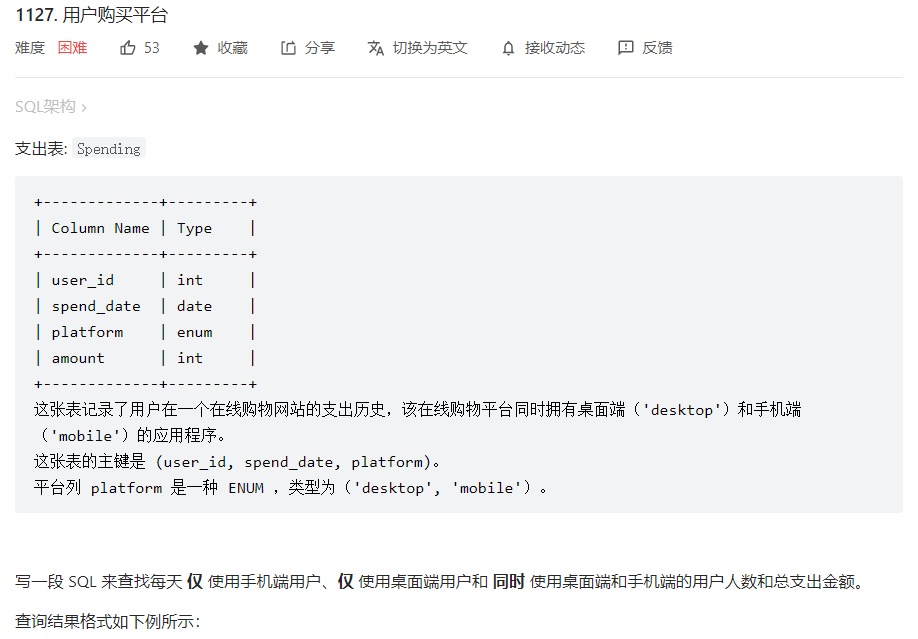
![]6I4GR3`FR5){2C6UZP81E.png
我的解法:
关键在于需要事先构造形如result前2列的表,否则最终结果没有0对应的行
将(desktop,mobile,both)映射为(-1,1,0),这样通过sum(‘desktop’)-sum(‘mobile’)便可判定
用户是仅用mobile or desktop 还是 both
with t as(select spend_date,'desktop' platform, 1 num from Spendingunionselect spend_date,'mobile', -1 from Spendingunionselect spend_date,'both', 0 from Spending)select t.spend_date,t.platform,ifnull(sum(amounts),0) total_amount,count(distinct user_id) total_users fromt left join(select *,sum(platform='desktop')-sum(platform='mobile') cnt, sum(amount) amountsfrom Spending group by user_id,spend_date) aon t.spend_date = a.spend_date and t.num = a.cntgroup by t.spend_date,t.platform
附上评论区解法,思路更直接
select t2.spend_date, t2.platform, ifnull(sum(amount), 0) as total_amount,
count(distinct user_id) as total_users
from
( #1.构造所需的表
select distinct spend_date, "desktop" as platform
from Spending
union
select distinct spend_date, "mobile" as platform
from Spending
union
select distinct spend_date, "both" as platform
from Spending
) as t2
left join
( #2.查询每个用户,每个日期,每个平台类型,总金额
select spend_date, user_id, sum(amount) as amount,
if(count(*)=1,platform,'both') as platform
from Spending
group by spend_date, user_id
) as t1
#3.左连接,并按日期和平台分组
on t2.spend_date = t1.spend_date and t2.platform = t1.platform
group by t2.spend_date, t2.platform

